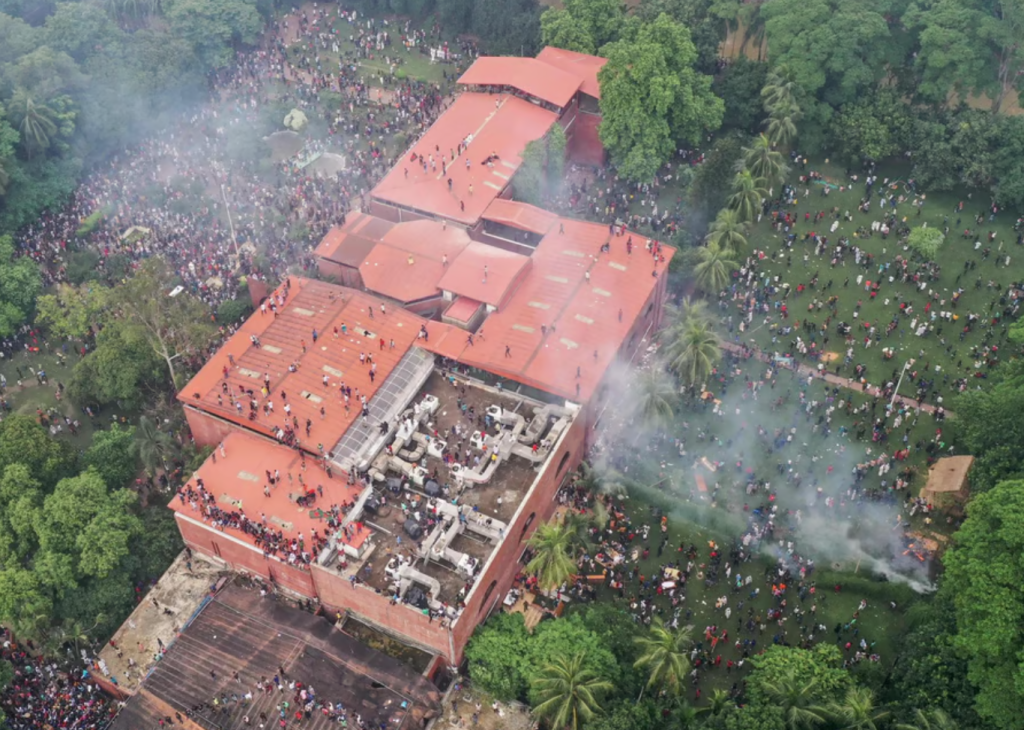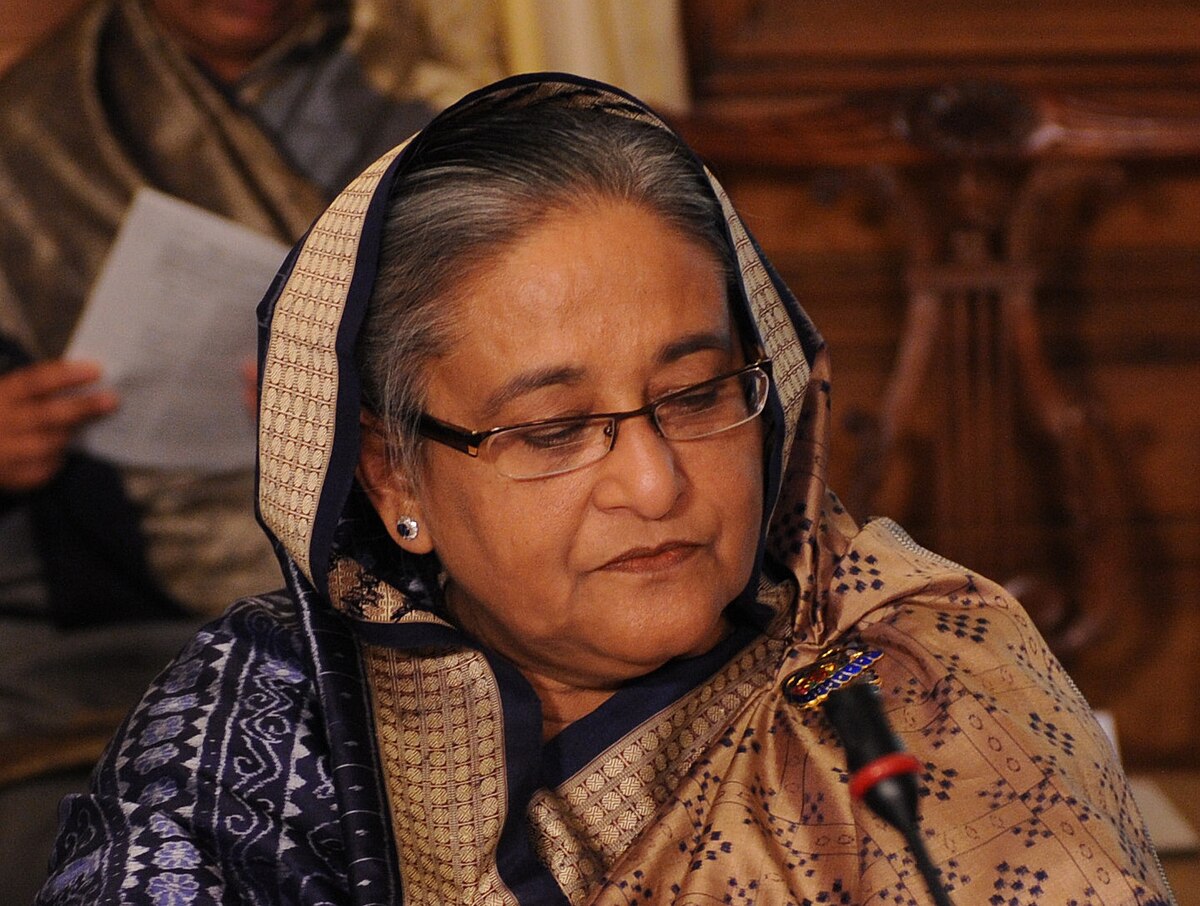The student-led mass uprising that led to the ousting of Prime Minister Sheikh Hasina on 5 August 2024 marked a turning point in the country’s political history. The final five days, from 1 to 5 August, were defined by surging public anger, violent clashes, and the collapse of Hasina’s more than 15-year rule.
The movement began in June 2024, protesting the reinstatement of a controversial government job quota, which reserved 30% of positions for descendants of 1971 Liberation War veterans. Critics denounced the policy as institutionalised favouritism benefiting Hasina’s Awami League, compounding frustration over youth unemployment, corruption, and nepotism.
Initially peaceful, the protests escalated sharply after violent crackdowns by security forces and attacks from the Chhatra League, the then-ruling party’s youth wing. Hasina’s inflammatory rhetoric—branding protesters “Razakars” (traitors)—further inflamed tensions, transforming the demonstrations into a nationwide anti-government movement demanding her resignation.
By 1 August, the protests had spread nationwide under the banner of “Students Against Discrimination.” The state response grew increasingly repressive, with security forces using tear gas, rubber bullets, and live ammunition. Leaked audio later revealed Hasina had personally ordered the use of “lethal weapons,” exposing the regime’s desperation.
Public outrage intensified after student protester Abu Sayed was shot dead by police in Rangpur on 16 July. The incident, livestreamed on social media, sparked national fury—especially after a doctor revealed police had pressured him to falsify Sayed’s autopsy.
On 2 August, the protesters issued a single demand: Hasina’s resignation. They called for a “Long March to Dhaka” on 5 August. In response, the government imposed a nationwide curfew and restricted internet access—measures that only hardened public resolve.
By 3 August, thousands defied the curfew, gathering in Dhaka. The movement had grown into a broad-based coalition, united against authoritarianism, electoral fraud, and economic mismanagement. Hasina rejected dialogue, labelling the protesters “terrorists,” while the military—traditionally neutral—began expressing unease, with junior officers reportedly unwilling to fire on civilians.
The next day, on 4 August, Bangladesh witnessed the bloodiest chapter in its political history—a day when peaceful protests for democratic reform were crushed by a violent and unprecedented crackdown, marking the final hours of Sheikh Hasina’s autocratic regime.
What began as a call for justice and change turned into one of the bloodiest confrontations the country had seen in decades, resulting in the deaths of hundreds and the wounding of thousands across the nation.
The day’s events transcended a mere clash between protesters and law enforcement agencies.
In a chilling development, not only did the law enforcers use deadly force, but pro-Awami League (AL) supporters and members of AL-affiliated organisations joined in the violence, brandishing automatic weapons.
Together, they launched a vicious assault on the unarmed protesters, leaving the streets of Dhaka and other parts of the country stained with blood.
Despite internet blackouts and curfews, reports of the unrest continued to spread. Retired military officials publicly criticised the government’s actions, revealing a further erosion of institutional support.

On 5 August, tens of thousands marched into Dhaka and stormed key government buildings, including Ganabhaban, the prime minister’s official residence. Hasina and her sister Sheikh Rehana fled to India. That afternoon, Army Chief General Waker-Uz-Zaman announced her resignation and the formation of an interim government, urging calm and pledging reform.
Celebrations erupted across the country, but the day was also marred by further violence. At least 135 people—including 24 police officers—were killed. Awami League offices were vandalised, statues of Sheikh Mujibur Rahman toppled, and the Bangabandhu Memorial Museum was set ablaze.
These final days reflected years of pent-up discontent, driven by allegations of corruption, electoral manipulation, human rights abuses, and growing inequality. Hasina’s exile has strained relations with India, where she remains under protection. Bangladesh’s interim government, led by Muhammad Yunus, has formally requested her extradition to face charges of crimes against humanity.
Formed on 8 August 2024, the interim government includes prominent student leaders like Nahid Islam and Asif Mahmud, underscoring the movement’s impact.
It has pledged sweeping electoral and judicial reforms and aims to hold national elections by April 2026. However, major challenges remain—restoring law and order, preventing sectarian violence, and rebuilding trust in governance.


